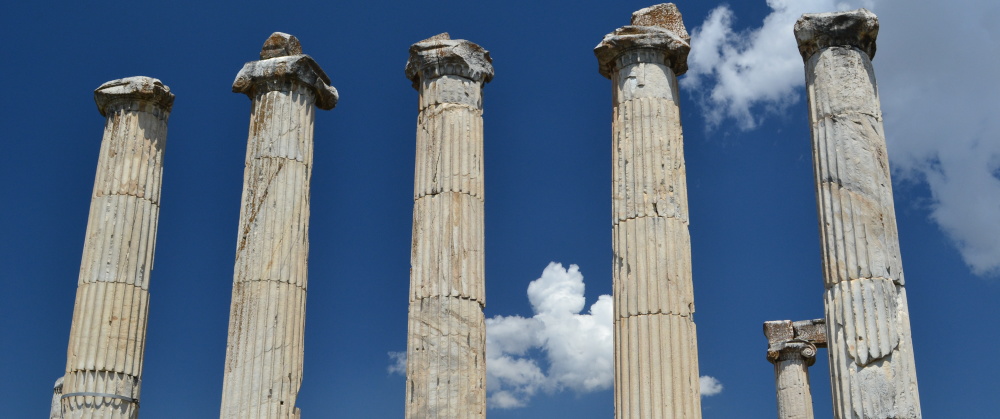For numerous reasons that cannot be explored in a blog post, it has become fashionable among NT scholars to read “empire” and the variegated phenomena of emperor worship into our NT documents, especially Paul. To choose one example out of the plethora of choices, J.R. Harrison (“Paul and the Imperial Gospel at Thessaloniki,” JSNT 25 (2002): 71) attempted to demonstrate that “in romanized Thessaloniki, the presence of an aggressive imperial eschatology and the widespread circulation of Augustan apotheosis traditions competed with early Christian proclamation of the rise and returning heavenly κύριος. In response, Paul injected heavily loaded political terms into his presentation of Christ, transformed their ideological content to his theological and social advantage, and thereby overturned the absolutist claims of the imperial cult.”
I decided to put Harrison’s comments to the test. This past week I examined numerous inscriptions related to “voluntary associations” in the Roman province of Macedonia where Thessalonikē is located from the 100 BCE-300 CE (I am indebted to John Kloppenborg and Richard Ascough, Greco-Roman Associations: Texts, Translations, and Commentary (Berlin: de Gruyter, 2011), abbreviated GRA). I chose to examine voluntary associations because these groups were formed voluntarily by individuals from the Roman world around various trades, deities, and the promise of a decent burial. As a result, this information presents the gods and values that were important for the denizens of Macedonia of their own volition. Here are my results:
The majority of associations were associated with a manifestation of a “traditional” Roman/Greek deity:
1. Zeus Hypsistos = Edessa (GRA §65) (51 CE); Pydna (GRA §72) (250 CE)
2. Silvanus = Philippi (GRA §68a-d) (2d c. CE)
3. Souregethēs = Philippi (GRA §69) (2d-3d c. CE)
4. Nemesis = Philippi (GRA §70) (2d-3d c. CE)
5. Liber, Libera, and Hercules = Philippi (GRA §70) (1t-2d c CE)
6. Aphrodite = Thessalonikē (GRA §75) (90-91 CE)
7. Zeus Dionysos Gongylos = Thessalonikē (GRA §76) (1t CE)
8. Sarapis and Isis = Thessalonikē (GRA §77) (1t-2d CE)
9. Dionysus = Thessalonikē (GRA §80) (209-10 CE); Berorea (GRA §63) (7 BCE)
Now let’s examine how many associations revolved around Augustus and emperor worship:
1. Caesar Augustus = Macedonia (GRA §62) (27 BCE-14 CE)
One. One association was associated with Augustus. According to our evidence, one group of individuals of their own volition decided to honor the emperor. That does not sound like “an aggressive imperial eschatology” that was “widespread” and competed with the nascent Christian proclamation of an enthroned Lord.
It must be admitted that our evidence is incomplete from the Roman world. What we have is only a fraction of what actually existed. However, when we compare the number of associations that were dedicated to the gods versus the emperors we can see the associations devoted to the gods far outnumber those connected to the emperors. Therefore, the evidence does not support Harrison’s hypothesis. This is a clear case of someone emphasizing a small piece of the pie to the detriment of the entirety of it.
